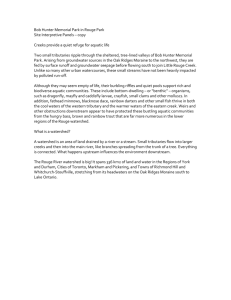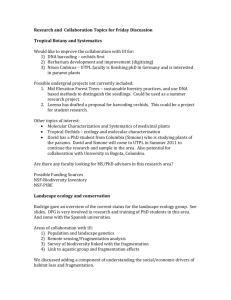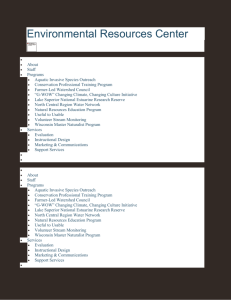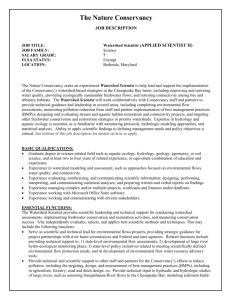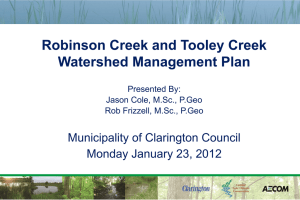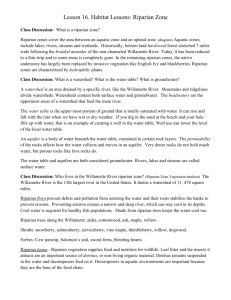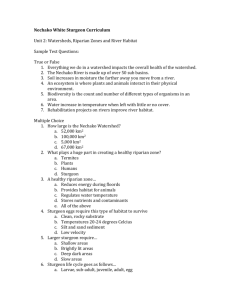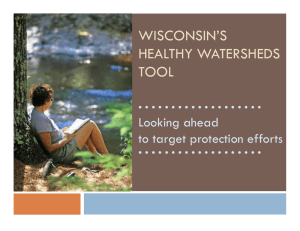Feedback Sheet - Sustainable Jersey
advertisement
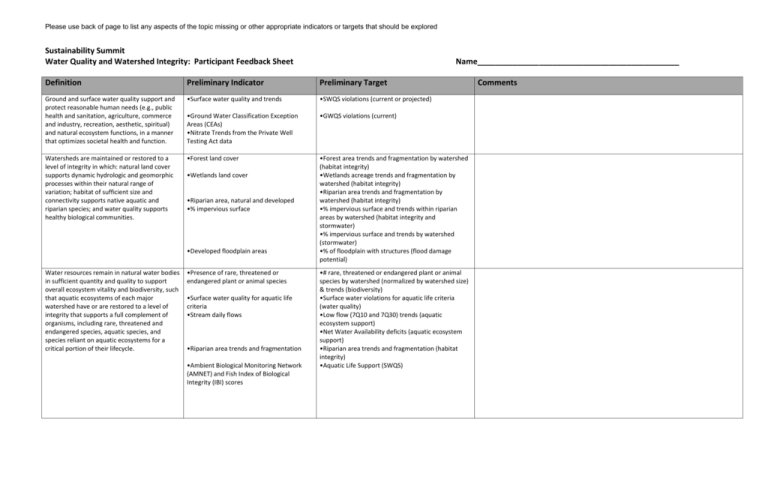
Please use back of page to list any aspects of the topic missing or other appropriate indicators or targets that should be explored Sustainability Summit Water Quality and Watershed Integrity: Participant Feedback Sheet Name______________________________________________ Definition Preliminary Indicator Preliminary Target Ground and surface water quality support and protect reasonable human needs (e.g., public health and sanitation, agriculture, commerce and industry, recreation, aesthetic, spiritual) and natural ecosystem functions, in a manner that optimizes societal health and function. •Surface water quality and trends •SWQS violations (current or projected) •Ground Water Classification Exception Areas (CEAs) •Nitrate Trends from the Private Well Testing Act data •GWQS violations (current) Watersheds are maintained or restored to a level of integrity in which: natural land cover supports dynamic hydrologic and geomorphic processes within their natural range of variation; habitat of sufficient size and connectivity supports native aquatic and riparian species; and water quality supports healthy biological communities. •Forest land cover •Forest area trends and fragmentation by watershed (habitat integrity) •Wetlands acreage trends and fragmentation by watershed (habitat integrity) •Riparian area trends and fragmentation by watershed (habitat integrity) •% impervious surface and trends within riparian areas by watershed (habitat integrity and stormwater) •% impervious surface and trends by watershed (stormwater) •% of floodplain with structures (flood damage potential) •Wetlands land cover •Riparian area, natural and developed •% impervious surface •Developed floodplain areas Water resources remain in natural water bodies in sufficient quantity and quality to support overall ecosystem vitality and biodiversity, such that aquatic ecosystems of each major watershed have or are restored to a level of integrity that supports a full complement of organisms, including rare, threatened and endangered species, aquatic species, and species reliant on aquatic ecosystems for a critical portion of their lifecycle. •Presence of rare, threatened or endangered plant or animal species •Surface water quality for aquatic life criteria •Stream daily flows •Riparian area trends and fragmentation •Ambient Biological Monitoring Network (AMNET) and Fish Index of Biological Integrity (IBI) scores •# rare, threatened or endangered plant or animal species by watershed (normalized by watershed size) & trends (biodiversity) •Surface water violations for aquatic life criteria (water quality) •Low flow (7Q10 and 7Q30) trends (aquatic ecosystem support) •Net Water Availability deficits (aquatic ecosystem support) •Riparian area trends and fragmentation (habitat integrity) •Aquatic Life Support (SWQS) Comments
